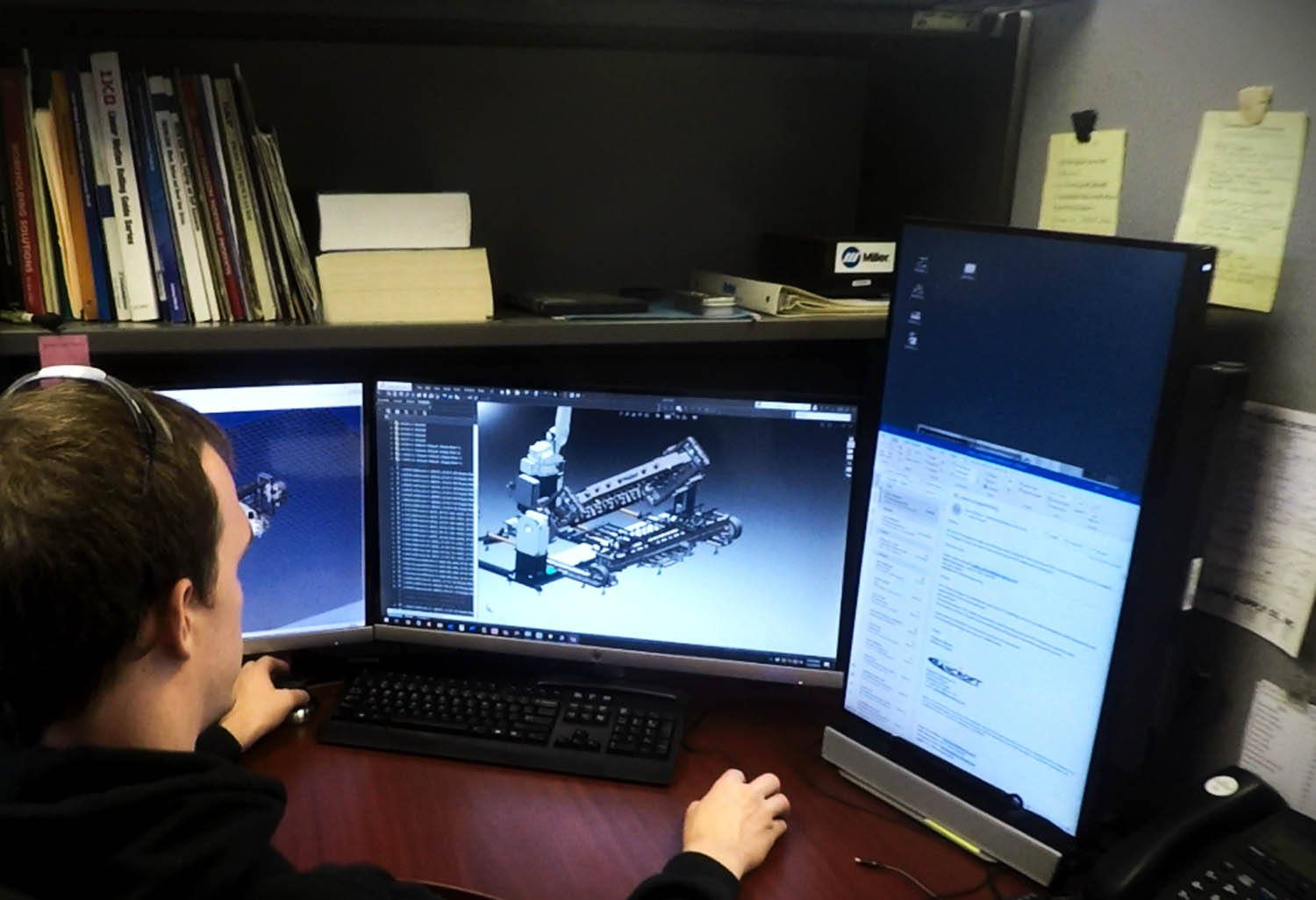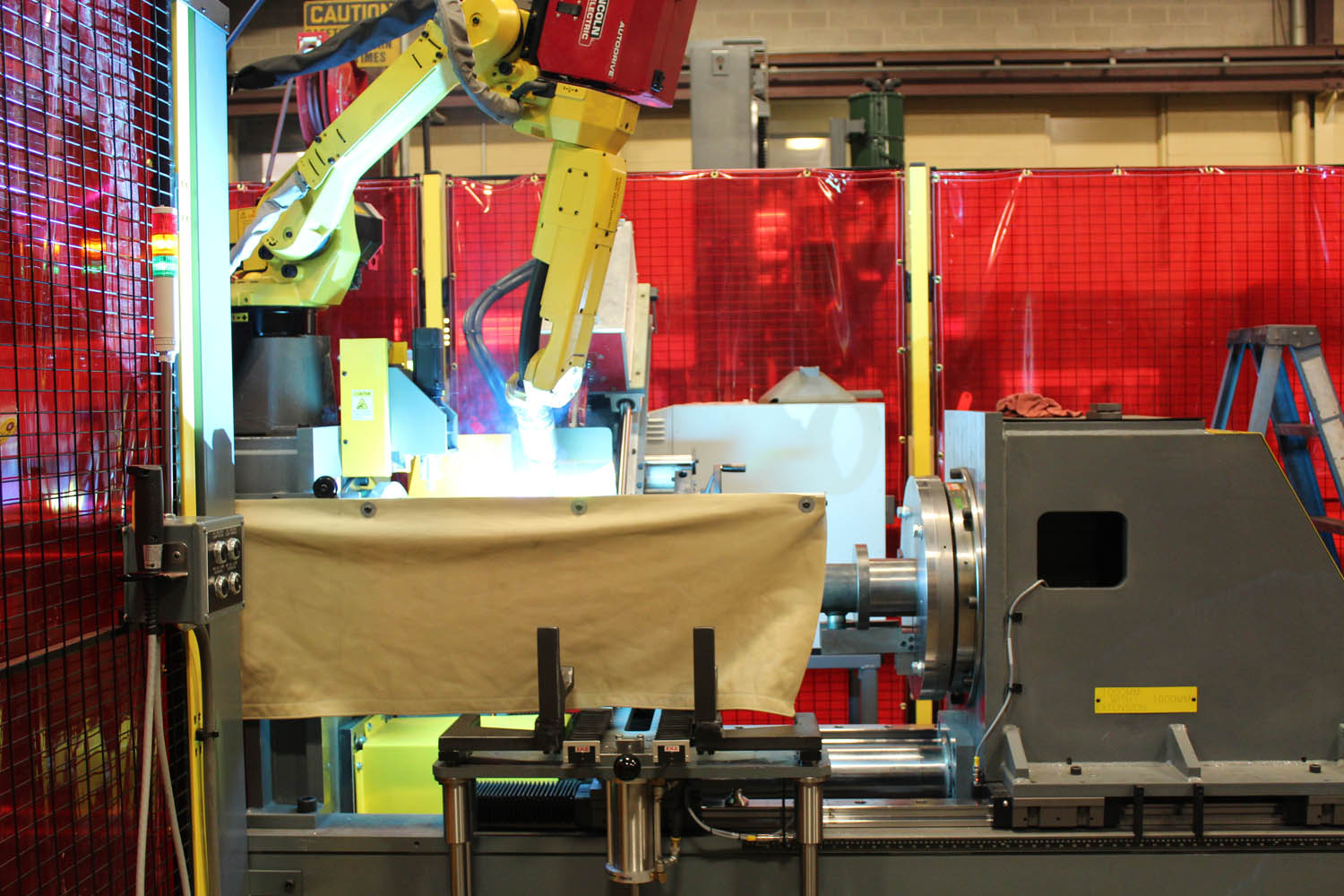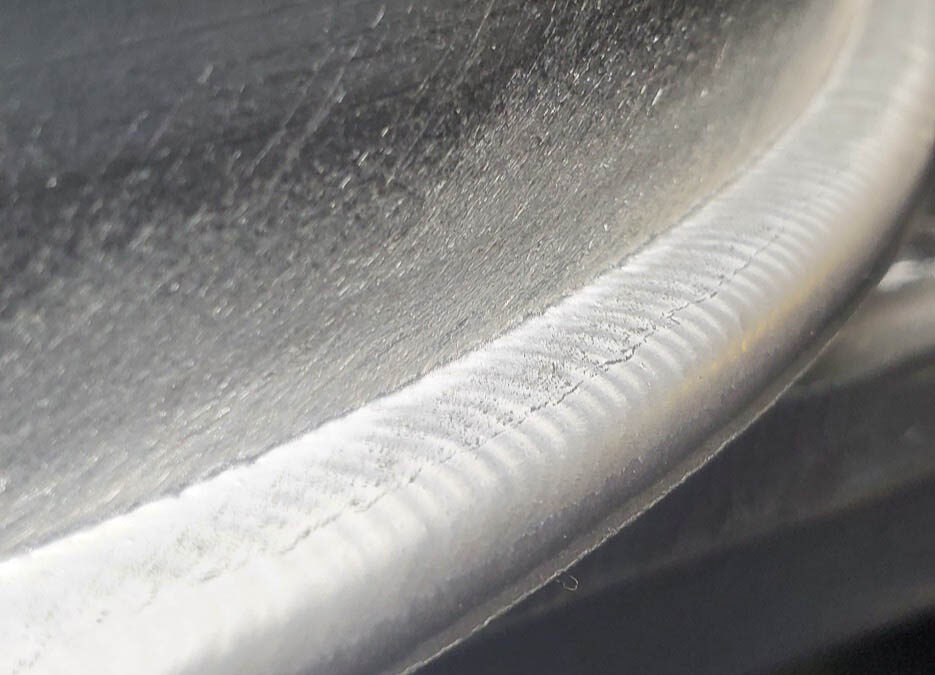We’ve been dedicated to developing welding technology with innovative, automated equipment and systems for over 50 years—understanding its various types and benefits is vital. In this blog, we explore key insights about welding automation, such as its ability to tackle industry challenges, improving operations and so much more.
#1. Automation Is Not Limited to Robots
Welding automation can be divided into hard and flexible forms. Hard automation (also referred to as mechanized welding) refers to technologies like seamers, circle welding systems/rotary welders and positioners; they do not offer as much programming flexibility as robots but can reduce variation and defects in long, straight welds. We offer a variety of semi-automated welding equipment options that can make a huge impact on your process.
#2. Automation Addresses the Skills Gap
Automation can address the welding skills gap by providing easy-to-use systems with user-friendly interfaces that can quickly be adopted even by those without technical backgrounds. These systems offer cost savings over manual labor while improving workforce resourcing levels.
#3. Welding Automation Creates Jobs
Contrary to popular belief, automation creates job opportunities by increasing productivity and expanding operational capacity. As automation boosts productivity, more employment opportunities arise. Fabricators can no longer afford to operate manually without risking rapid shrinkage; now more than ever they must swiftly adopt automation plans to stay competitive.

All the skills welders possess can easily be transferred into automated welding—they’ll just be applied differently!
#4. Consider Speed to Adoption
Striking the balance between perfectionism and speed to adoption can be tricky. Starting out with a pre-engineered robotic cell that meets most criteria can speed adoption up significantly; pre-engineered cells serve as an entryway to growth for faster adoption and expansion; semi-automated welding options, in particular, are ideal for small to midsize shops with high-mix, low-volume applications as they enable them to start production welding quickly!
#5. Begin With Low Hanging Fruit
It is wise to start off by automating simpler, repeatable tasks that won’t pose as great a challenge to gain trust in automation and ensure a smooth transition. Look for parts with repeatable processes so the robots can help increase productivity; similarly starting mundane subassemblies with simple processes may also prove successful.
#6. Establish an Automation Champion
Appointing an automation champion within your organization is critical for its successful implementation. This person will oversee programming, operation, maintenance, training and implementation activities. Attributes that distinguish an ideal automation champion include their desire to learn and advance within this field—which could come from anywhere within an organization and have significant effects on productivity and quality outcomes.
#7. Revamp ROI Metrics
Traditional ROI metrics need to be updated to reflect the true cost of welding quality and missed opportunities due to capacity limitations. Now more than ever, product quality matters, which necessitates the calculation of lost opportunities as well as savings from eliminating overwelding and distortion—automatic and semi-automatic welding offers significant cost advantages both financially and when considering distortion-reducing costs as well as post-process work savings ratios.
#8. Don’t Skimp on Tooling
While tooling costs may be prohibitive, investing enough is necessary for successful automation. Evaluate what level of support your automation partner offers—Bancroft provides complete turnkey solutions including tool design, installation and programming services.

#9. Automation Exposes Deficiencies & Bottlenecks
Automating processes often reveals inefficiencies within both upstream and downstream processes. Prior to automating, it’s essential that upstream processes are robust. The weld engineers at Bancroft can help address tolerances and improve success rates; while demonstrating how automation can lead to high precision and reveal productivity bottlenecks.
#10. Vision + Sensing Systems Have Evolved
Recent advancements in vision and seam tracking systems, combined with improved algorithms and machine learning technology have made automation smarter and simpler to deploy. 2D and 3D vision technology is now more cost-effective and easier to set up, helping companies solve problems more quickly while cutting costs effectively.
#11. Invest in Education
Lastly, education and training programs are critical to cultivating automation skills and maintaining competitive advantages within manufacturing. By offering educational opportunities and mentoring programs, manufacturing firms can foster steady advancement of automation capabilities while increasing overall industry competitiveness.
Welding Equipment Builders
At Bancroft Engineering, we’re dedicated to helping our customers make the most of welding automation. No matter if it’s hard or flexible automation systems or robotic systems—our team has all of the equipment, expertise and support you require for success.



